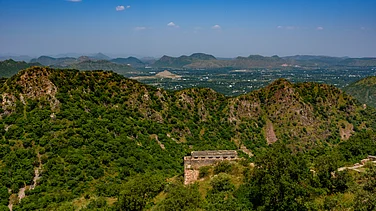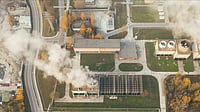Black carbon— often referred to as soot —is responsible for half of the global warming witnessed till date and slashing it could deliver an 80% reduction in black carbon emissions by 2030, compared to a 3% reduction under current policies, according to a new study released by the Clean Air Fund and backed by the International Centre for Integrated Mountain Development (ICIMOD).
The study further indicated that black carbon, a climate pollutant with a short lifespan but devastating long term consequences, in South Asia is a ‘significant driver’ of glacier melt, accelerating loss of secure water supplies for billions of people. The findings of the report were presented at events in Paris and New York as part of the first-ever World Day for Glaciers, highlighting the urgency of addressing black carbon pollution to protect the planet’s ice reserves and safeguard communities reliant on stable climate conditions.
The report states that Black Carbon reduction could “…minimise rainfall disruptions and avoid rainfall extremes, flooding, and drought.” This has implications for food security especially in a region that is reliant on steady monsoons and reliable rainfall for a good harvest.
“Based on data from 2013, residential solid fuel burning and brick kilns together account for 45 per cent-66 per cent of the anthropogenic black carbon deposition in the Hindu Kush Himalaya region, which encompasses parts of eight countries (Afghanistan, Bangladesh, Bhutan, China, India, Myanmar, India and Pakistan),” the report stated.
Cooking, heating and lighting are responsible for most of South Asia’s Black Carbon emissions. Rice mills, brick making and sugar industries are also significant emitters, as per the study. The study points out that current efforts to address black carbon are insufficient.
How to Tackle It?
The Clean Air Fund report identifies six types of obstacles to action – political, scientific, financial, regulatory, industrial and communication.
Izabella Koziell, Deputy Director General at the International Centre for Integrated Mountain Development (ICIMOD) said, “The fastest way to achieve progress on clean air is to target the abatement of black carbon and other super-pollutant sources coming from sectors like residential biomass combustion, transportation and industry, amongst others. ICIMOD’s experience in the Hindu Kush Himalaya region shows that investing in cleaner technologies, along with continued advanced monitoring, and a strong policy support mechanism can lead to long-term environmental, economic and health benefits—an approach that is critical for one of the world’s most polluted regions.”
The study also recommended focusing on cryosphere action through International Maritime Organisation (IMO) regulations, prioritising black carbon in clean air policies, coordinating super pollutant action and funding research on black carbon's climate and health impacts.




























